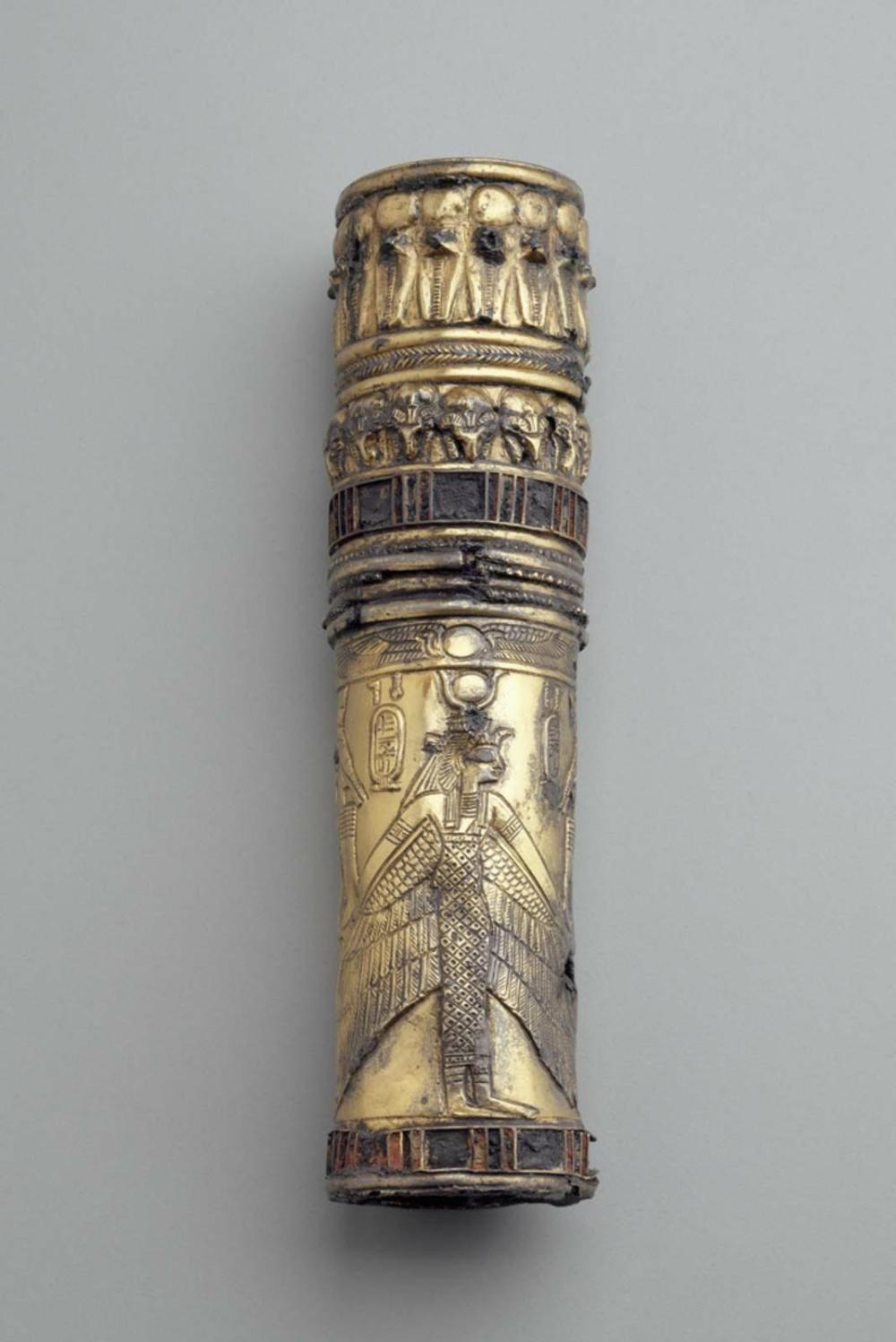Advanced Search
Cylinder sheath of Amaninatakelebte
Nubian
Napatan, reign of Amaninatakelebte
538–519 B.C.
Findspot: Sudan, Nubia, Nuri, Pyramid 10
Medium/Technique
Gilded silver, colored paste inclusions
Dimensions
Height x diameter: 12 x 3.1 cm (4 3/4 x 1 1/4 in.)
Credit Line
Harvard University—Boston Museum of Fine Arts Expedition
Accession Number20.275
NOT ON VIEW
CollectionsAncient Egypt, Nubia and the Near East
ClassificationsUnclassifiable objects – Function unknown
DescriptionEspecially carefully chased relief, as well as inlays (now lost) distinguish this sheath. A rosette appears on the bottom. The winged goddess stands on the lower cylinder between a ram-headed and a human-headed Amun . On the upper cylinder are ram's heads and a frieze of uraeus serpents. (Sudan catalogue)
[Alternate Text for 20.275, 21.340, 11735, 11737, 11746:]
Gold, electrum, and gilded silver objects called cylinder sheaths were found in a number of the tombs of the kings and queens of Kush at Nuri in the Sudan, but have not been recorded elsewhere. Each consists of two cylinders, the longer one closed at the base and the shorter having an internal sleeve that fits inside the longer piece. The cylinders are decorated with friezes of uraei and ram's heads, divine figures, and royal names. Their purpose is unknown; it has been suggested that they held rolled documents, but the open end makes this unlikely.
[Alternate Text for 20.275, 21.340, 11735, 11737, 11746:]
Gold, electrum, and gilded silver objects called cylinder sheaths were found in a number of the tombs of the kings and queens of Kush at Nuri in the Sudan, but have not been recorded elsewhere. Each consists of two cylinders, the longer one closed at the base and the shorter having an internal sleeve that fits inside the longer piece. The cylinders are decorated with friezes of uraei and ram's heads, divine figures, and royal names. Their purpose is unknown; it has been suggested that they held rolled documents, but the open end makes this unlikely.
ProvenanceFrom Nuri, pyramid 10 (tomb of Amani-natake-lebte), chamber B. January 1917: excavated by the Harvard University–Boston Museum of Fine Arts Expedition; assigned to the MFA in the division of finds by the government of Sudan.
(Accession date: March 1, 1920)
(Accession date: March 1, 1920)






